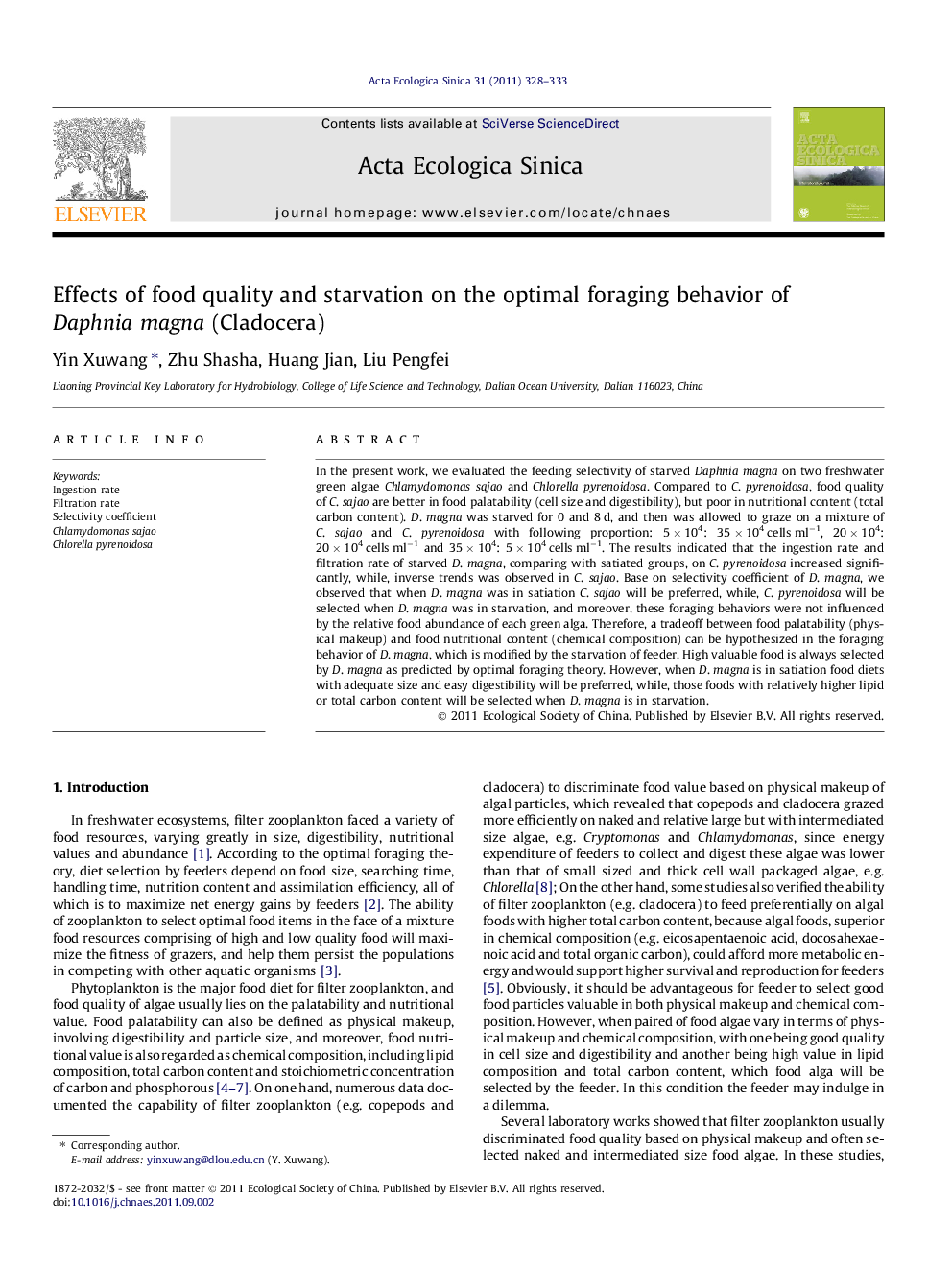| Article ID | Journal | Published Year | Pages | File Type |
|---|---|---|---|---|
| 4379908 | Acta Ecologica Sinica | 2011 | 6 Pages |
Abstract
In the present work, we evaluated the feeding selectivity of starved Daphnia magna on two freshwater green algae Chlamydomonas sajao and Chlorella pyrenoidosa. Compared to C. pyrenoidosa, food quality of C. sajao are better in food palatability (cell size and digestibility), but poor in nutritional content (total carbon content). D. magna was starved for 0 and 8 d, and then was allowed to graze on a mixture of C. sajao and C. pyrenoidosa with following proportion: 5 Ã 104: 35 Ã 104 cells mlâ1, 20 Ã 104: 20 Ã 104 cells mlâ1 and 35 Ã 104: 5 Ã 104 cells mlâ1. The results indicated that the ingestion rate and filtration rate of starved D. magna, comparing with satiated groups, on C. pyrenoidosa increased significantly, while, inverse trends was observed in C. sajao. Base on selectivity coefficient of D. magna, we observed that when D. magna was in satiation C. sajao will be preferred, while, C. pyrenoidosa will be selected when D. magna was in starvation, and moreover, these foraging behaviors were not influenced by the relative food abundance of each green alga. Therefore, a tradeoff between food palatability (physical makeup) and food nutritional content (chemical composition) can be hypothesized in the foraging behavior of D. magna, which is modified by the starvation of feeder. High valuable food is always selected by D. magna as predicted by optimal foraging theory. However, when D. magna is in satiation food diets with adequate size and easy digestibility will be preferred, while, those foods with relatively higher lipid or total carbon content will be selected when D. magna is in starvation.
Related Topics
Life Sciences
Agricultural and Biological Sciences
Ecology, Evolution, Behavior and Systematics
Authors
Yin Xuwang, Zhu Shasha, Huang Jian, Liu Pengfei,
